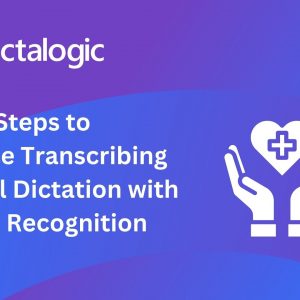
The process of turning speech from an audio file into text is known as audio transcription, which in recent times has seen significant growth across many different sectors, with each having its standard dictation practices.
The most common use case of digital dictation services is listed below.
Recording Minutes:
Record your meeting discussion or dictate keynotes and have the AI transcribe them.
Depositions and Client Meetings:
A record of deposition is as important as any meeting with a client, which for some is often done off-site, therefor speech recognition solution can come in quite handy.
Create Documents:
Users often record detailed documents, whether it’s office file notes, documenting patient records, email bodies, or even customer data, to place in the document management system.
Task Delegation:
Assign tasks to your team members quickly using the audio dictation service on the Dictalogic dashboard.
Create Reports and files:
Dictate reports with the use of punctuation and accurately transcribed grammar. While benefitting from additional Dictalogic features such as auto texting, add pre-populated paragraphs and templates to save time and effort.
Keeping client records:
Dictate individual client records and additional information that describes and documents the evaluation, diagnosis or treatment of a client.
Journalism:
Production of reports on the interaction of events, facts, ideas, and people that are the “news of the day”.
Conclusion
There are certainly no limitations to using digital dictation; in most cases, our work revolves around typing and documenting. Hence Dictalogic offers a bespoke system for users to easily create dictations and have them transcribed within moments using AI speech to text service, saving time and costs, especially over those extra billable hours.




